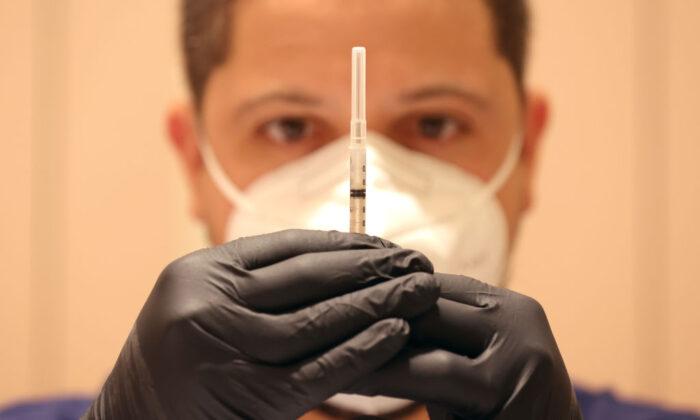The Food and Drug Administration (FDA) wants to simplify the current COVID-19 vaccination strategy to be more like an annual flu shot, according to briefing documents released on Jan. 23 ahead of a key advisory meeting to be held on Jan. 26.
Currently, people first get two doses of the original COVID-19 vaccine spaced several weeks apart, followed a few months later by a bivalent booster tailored to protect against newer variants. The FDA’s proposal wants to change that.
Instead, the primary dose and booster would be combined into a single product for healthy adults, developed in spring based on prevailing strains and given once a year in the fall, much like how flu shots are administered.
There would still be a two-dose vaccine—and corresponding immunization schedule—for very young children, as well as the elderly and people with compromised immunity who might not get the same kind of immune response from a single shot.
The proposed changes would basically mean that the bulk of COVID-19 vaccines would become bivalent, while Pfizer and Moderna’s bivalent shots would be used for all doses, not just boosters.
Key Question
The key question that the Vaccines and Related Biological Products Advisory Committee will be asked to vote on at its Jan. 26 meeting, according to one of the documents (pdf), is as follows:“Does the committee recommend harmonizing the vaccine strain composition of primary series and booster doses in the U.S. to a single composition, e.g., the composition for all vaccines administered currently would be a bivalent vaccine (Original plus Omicron BA.4/BA.5)?”
Besides that question being put to a vote, the panel also will discuss simplifying the process for determining the need for periodic COVID-19 vaccine updates and the timing of such updates.
The idea is to establish a process for vaccine strain selection recommendations that is similar to the one used for seasonal influenza vaccines. Namely, it would be based on assessing the predominant—or predicted—variants in the springtime so that corresponding vaccines could be produced by the fall.
The FDA’s proposal followed the agency’s announcement in December 2022 of plans for the expert panel to consider updating the COVID-19 vaccination strategy in the face of waning protection and the emergence of new variants.
People would presumably find it easier under a simplified process to take the recommended COVID-19 shot once a year rather than having to track when they got their prior jabs and whether they were primary or booster doses.
If the panel endorses the FDA’s proposal on Jan. 26, the agency will then work with the Centers for Disease Control and Prevention (CDC) to hash out the details.
Boosters and Waning Immunity
Waning immunity from COVID-19 vaccinations and the emergence of new variants have so far led regulators to recommend boosters based on prevailing strains.There’s also disagreement among health experts as to whether a booster strategy based on emerging variants is the way to go.
“The situation is becoming more like influenza in that vaccine efficacy is modest and efficacy is mainly against serious disease,” Stanley Plotkin, a vaccinologist and professor of pediatrics at the University of Pennsylvania, told the outlet.
EMA made its recommendation based on data that showed primary vaccination with the adapted bivalent vaccines should result in a broad immune response in people who haven’t been vaccinated against COVID-19 or who hadn’t experienced a prior infection.





